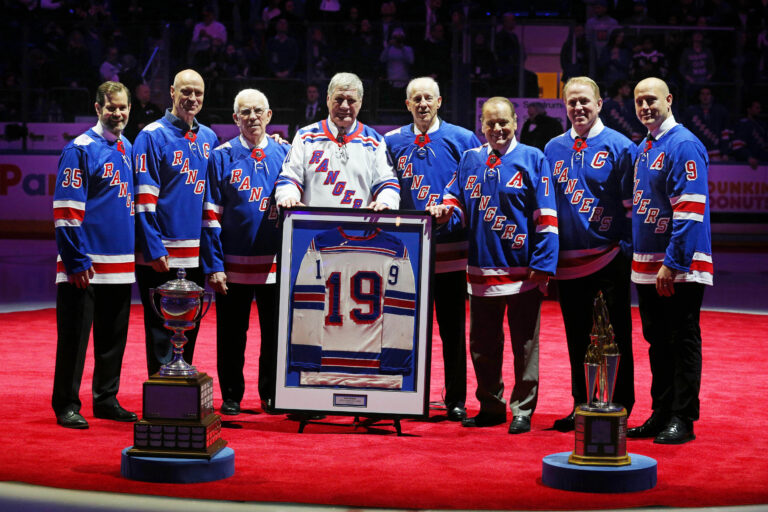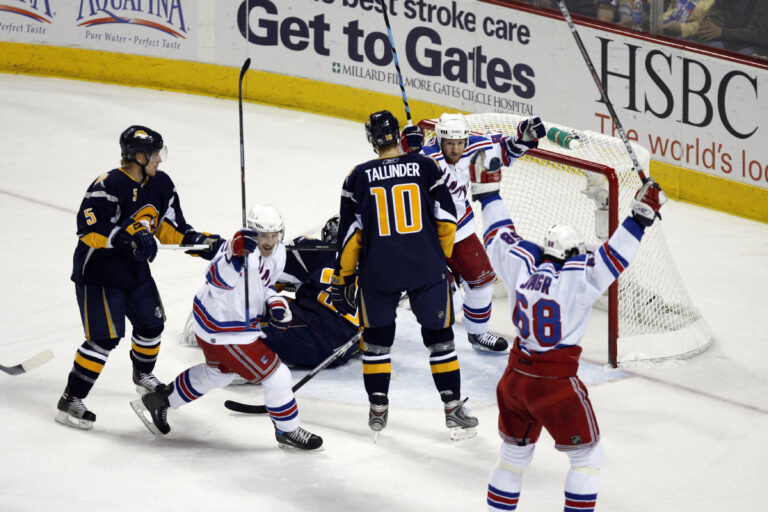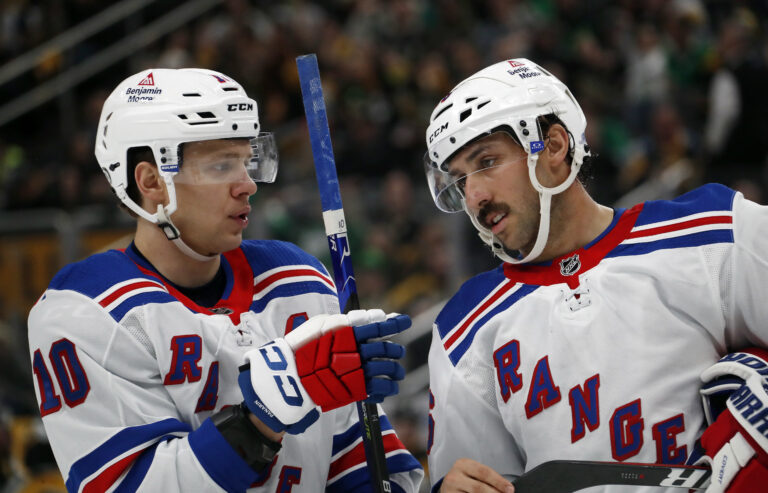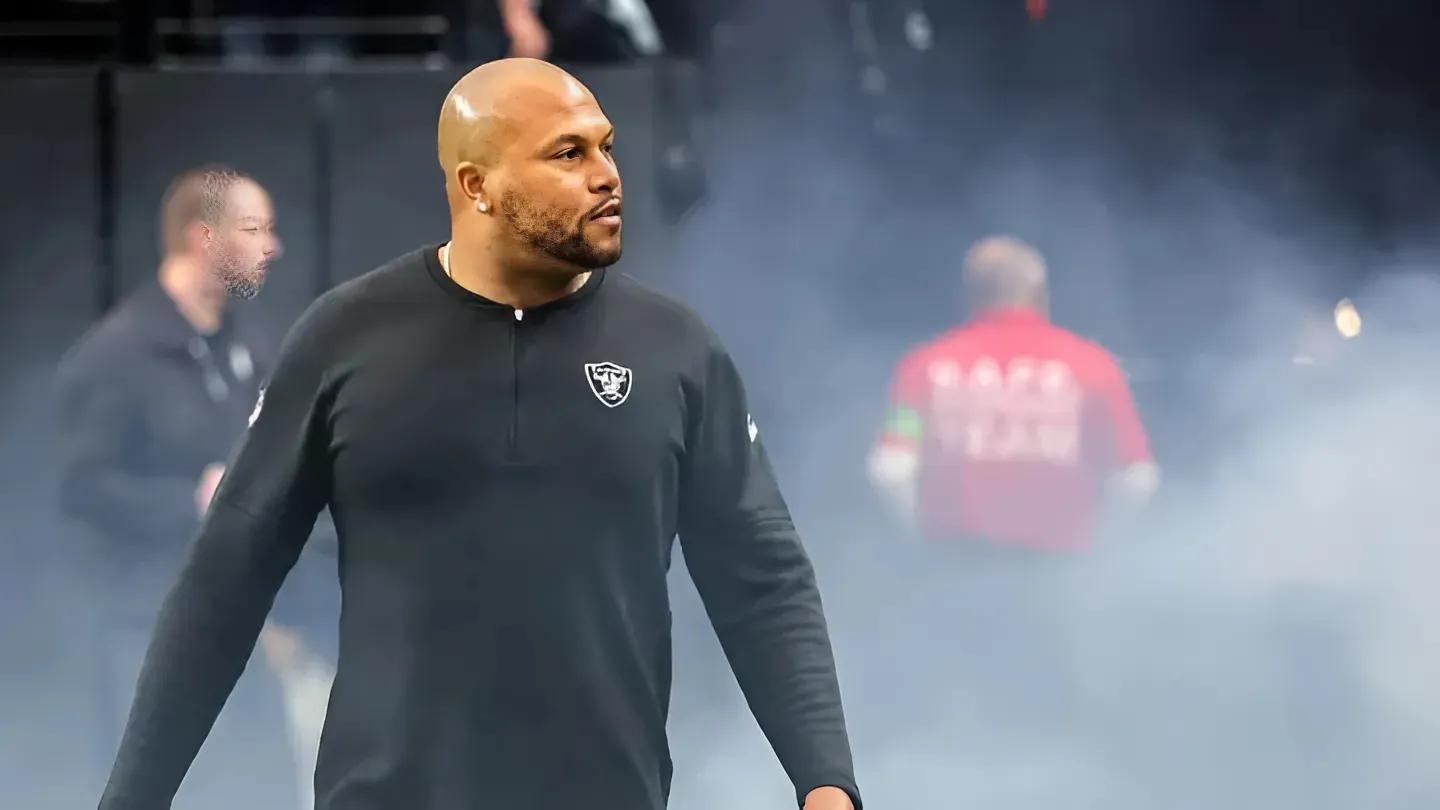
From their first days in the NHL 98 years ago to the present day, the New York Rangers have had some of the most productive lines in NHL history — and some of the catchiest nicknames.
Lines have been named for such things as the subways that run under Madison Square Garden, nationalities, food, animals and movies. They’ve included Hockey Hall of Famers and trios that played together for several seasons, as well as players who spent just a year or two with the Rangers. Some have keyed Stanley Cup runs, others came up short and still others barely made the playoffs.
Regardless, all of them bring warm memories to New York hockey fans.
Remembering greatest forward lines in Rangers history
Here’s a look at some of the most memorable lines in Rangers history.
GAG Line (Vic Hadfield, Jean Ratelle, Rod Gilbert)

It’s not unusual for a team to put some muscle on a forward line to protect two players who are focused on offense. Such is the tale of arguably the best post-World War II line in Rangers history.
Gilbert and Ratelle grew up in the Montreal suburbs. The Rangers signed Gilbert at age 14, then inked Ratelle, whose school was next to Gilbert’s home, soon after at his friend’s behest. They played together in junior hockey for Guelph, making life miserable for goalies. Hadfield was claimed by the Rangers from the Chicago Black Hawks in the June 1961 Inter-League draft. He didn’t have the same skill level as Gilbert and Ratelle but brought muscle to an undersized team and actually led the NHL in penalty minutes with 151 in 1963-64.
Hadfield eventually improved his game to the point that he could contribute offensively, and GM-coach Emile Francis put him on the left side of a line with Ratelle in the middle and Gilbert on the right in 1965-66. Back problems hampered each over the next two seasons, but the threesome began clicking in 1967-68, with Hadfield reaching the 20-goal mark for the first time, while Ratelle (78 points) and Gilbert (77) finished fourth and fifth in NHL scoring.
The still-unnamed unit remained very productive during the next three seasons before having a season that might have ended with the Rangers’ first championship since 1940 were it not for an unfortunate injury. After a sizzling start, they were tagged “The GAG (Goal A Game) Line,” though their pace of production soon led to a revised tag of “The TAG (Two A Game) Line.” All three players broke the 40-goal mark, an NHL first, and they wound up with a combined total of 312 points, including the first 50-goal season in Rangers history by Hadfield, who had never scored more than 26 (he scored Nos. 49 and 50 on the final day of the season despite playing with a broken thumb).
Ratelle had 46 goals and 109 points in 63 games, and battled Phil Esposito of the Boston Bruins for first in the scoring race when his regular season ended on March 1, 1972, after a slap shot by teammate Dale Rolfe broke his ankle. After the Rangers eliminated the Montreal Canadiens and the Black Hawks to make the Stanley Cup Final for the first time since 1950, The Rangers lost in six games to the Bruins, with Ratelle basically still playing on one leg.
The “GAG Line” lived up to its name in each of the next two seasons before a trade sent Hadfield to the Pittsburgh Penguins in the summer of 1974. Ratelle and Esposito switched teams in November 1975 when they were involved in one of the biggest deals in NHL history. Gilbert was the only one to retire with the Rangers, hanging up his skates in November 1977. Each had their number retired by the Rangers, and Gilbert remains the franchise’s all-time scorer leader (406 goals, 1,021 points).
The A Line (Bun Cook, Frank Boucher, Bill Cook)
No line in Rangers history stayed together for as long as their first great trio, each of whom is enshrined in the Hockey Hall of Fame.
The Cook brothers and Boucher each played in the Western Hockey League until the WHL folded after the 1925-26 season. The Rangers bought the contracts of the Cook brothers, then acquired Boucher from Boston after the Bruins had purchased his contract from Vancouver.
The threesome, which was named for the subway line that ran under the old Madison Square Garden, was an immediate hit. Bill Cook scored the first goal in franchise history, giving the Rangers a 1-0 victory over the defending Stanley Cup champion Montreal Maroons in their NHL debut on Nov. 16, 1926. He led the NHL with 33 goals and 37 points in 44 games, and the line helped the Rangers to first place in the American Division in 1926-27. One year later, they were key to the Rangers’ first championship run, with the line scoring every goal (five by Boucher) in a 3-2 series win over the Maroons in the best-of-5 Stanley Cup Final.
The line was a perfect blend of scoring, playmaking and skill. Cook led the NHL in goals (28) and points (50) again in 1932-33, then scored the Cup-winning goal in overtime against the Toronto Maple Leafs. Boucher led the League in assists three times and topped all playoff scorers twice. He also won the Lady Byng Trophy seven times in a span of eight seasons; the NHL finally gave him the trophy in 1935 and commissioned another one. Bun Cook was an excellent passer in his own right (he came up with the idea of the drop pass) and scored at least 13 goals in each of his first nine seasons, none of which was longer than 48 games.
The “A Line” rolled along for New York’s first 11 seasons, longer than any other trio in team history. They received one last honor on Feb. 11, 1968, when they were among the 62 players invited to the final game at the “old Garden” and made one final rush that ended with Bill Cook putting the puck in the net.
The Messier Line (Adam Graves, Mark Messier, Tony Amonte/Alexei Kovalev/Pat Verbeek)

Messier and Graves won the Stanley Cup as teammates, but not linemates, with the Edmonton Oilers in 1990 and arrived in New York a few weeks apart in the fall of 1991; Graves as a free agent in September and Messier in a blockbuster trade a few weeks later. Coach Roger Nielson put them together, and they meshed perfectly: Graves, who had never reached double figures in goals in Edmonton, scored 26 playing on Messier’s left side that first season. Messier won the Hart Trophy as MVP with a 107-point season, and Amonte, a rookie, spent much of the season on their right wing and was a Calder Trophy finalst after scoring 35 goals. The Rangers won the Presidents’ Trophy as the regular-season champion.
Graves and Messier stayed together until 1996-97, but the third member of the line wasn’t always the same. Amonte was sent to Chicago at the 1994 NHL Trade Deadline, opening up a spot for Kovalev. Graves broke the Rangers record with 52 goals and Messier topped the forwards with 84 points that magical season. Kovalev made his biggest mark in the playoffs, finishing with nine goals and 21 points to help the Rangers end their 54-year championship drought.
The right side changed again late in the 1994-95 season when the Rangers landed Verbeek from the Hartford Whalers. The “Little Ball of Hate” had 10 goals in 19 games after coming to New York, then scored 41 goals and finished with 82 points in 69 games during his one full season with the Rangers before leaving as a free agent.
Messier did the same a year later, signing with the Vancouver Canucks before returning three years later. He and Graves were reunited for the 2000-01 season before Graves ended his career by playing two seasons with the San Jose Sharks.
Bulldog Line (Dave Balon/Steve Vickers, Walt Tkachuk, Bill Fairbairn)
Few teams have two nicknamed lines, but the Rangers of the early 1970s did. While the soon-to-be-named “GAG Line” piled up goals and points, the “Bulldog Line” that Francis put together in 1969-70 became known for its work ethic, tenacity and two-way play.
Francis put Tkaczuk, a 22-year-old center, together with veteran left wing Balon and rookie right wing Fairbairn on a line that was an instant hit. Balon led the team with 33 goals, Tkaczuk was tops with 70 points and Fairbairn was second in Calder Trophy balloting after a 23-goal, 56-point season. The Bulldogs actually outscored their more heralded linemates with 203 points.
Tkaczuk and Fairbairn also became one of the League’s top penalty-killing duos.
Balon had his biggest goal-scoring season in 1970-71 with 36, and Tkachuk led the Rangers in scoring with 75 points — although Fairbairn, hampered by injuries, managed just 30 points in 56 games. Balon was traded early in 1971-72 after his play showed signs of decline (he was later diagnosed with multiple sclerosis), but Tkaczuk and Fairbairn thrived despite a rotating set of left wings, combining for 46 goals, 125 points and a plus-68 rating to help the Rangers reach the Final for the first time since 1950.
Francis put Vickers on the left wing of a revised “Bulldog Line” in 1972-73, and Vickers rewarded him by scoring 30 goals, including three hat tricks, and winning the Calder Trophy as NHL rookie of the year. Fairbairn also had an NHL career-best 30 goals, and the trio combined for 17 game-winners. They stayed together for one more season before Vickers moved to the top line after Hadfield was traded in the summer of 1974. Fairbairn and Tkaczuk stayed together until early in the 1976-77 season, when Fairbairn was traded to the Minnesota North Stars.
The Bread Line (Alex Shibicky, Neil Colville, Mac Colville)
As the “A Line” was coasting to its final stop, the Rangers’ next great line was just leaving the station.
The Colville brothers and Shibicky played together coming up through the Rangers system, so it was no surprise that when they reached the NHL, they were put together on the same line (and lived in the same apartment). They soon became known as the Rangers’ “bread and butter,” hence their nickname. The threesome hit their stride in 1936-37 and remained together through 1941-42.
Shibicky was the most prolific scorer among the three, twice breaking the 20-goal mark in an era where the regular-season lasted just 48 games. One reason for his success was his pioneering use of the slap shot, which he described as being “just like a bullet.” Neil Coville was the most honored; he was a Second-Team All-Star in 1938-39 and again in 1939-40, when they helped the Rangers win their third Stanley Cup championship since entering the NHL in 1926. Mac Coville brought a solid two-way game that balanced the line.
All three enlisted in the Canadian Army in 1942 and returned to the Rangers after World War II, but the magic was gone. The only one of the three to have any post-war success was Neil Coville, who became a defenseman and played four seasons, earning a third Second-Team All-Star selection in 1947-48 that made him one of the few players in NHL history to be named an all-star as a forward and a defenseman.
No Name, Just Points (Dean Prentice, Larry Popein, Andy Bathgate)
No, that’s not their real name. Actually, the Rangers’ top line of the late 1950s and early 1960s never had a nickname. But Prentice and Bathgate, junior teammates at Guelph in the Ontario Hockey Association, were wings on a line with “The Pope” that put up a lot of offense and helped the Rangers to three straight playoff berths in the late 1950s.
Bathgate was the star of the trio and the only one in the Hockey Hall of Fame. He surpassed Frank Boucher’s single-season record of 62 points in 1955-56 and had at least 74 points in each of the next seven seasons — including an NHL career-high of 88 in 1958-59, when he won the Hart Trophy. His slap shot was one of the most feared in the NHL, and it was his backhander to Jacques Plante’s face in a Nov. 1, 1959, game against the Montreal Canadiens that began the era of the goalie mask. Bathgate was traded to Toronto in February 1964 after scoring 272 goals with the Rangers, a team record that lasted until Gilbert came along. The Rangers retired his No. 9 in 2009.
But Bathgate’s linemates were solid players in their own right. Prentice, one of the most underrated players in NHL history, had four 20-goal seasons and broke the 60-point mark twice. He played more than a decade after being traded to Boston early in the 1962-63 season and was a 26-goal scorer for the North Stars at age 40.
Popein was a solid two-way center during his six full seasons with the Rangers, averaging 12 goals and 33 points before he was sent back to Vancouver of the Western Hockey League in 1960. He coached the Rangers briefly in 1973-74.
Two Czechs and a Swede (Martin Straka, Michael Nylander, Jaromir Jagr)

For the two seasons they were together, the “Two Czechs and a Swede” combination of three over-30 forwards was as good a line as there was in the NHL.
Jagr, a five-time NHL scoring champion, arrived first, coming in a trade with the Washington Capitals midway through the 2003-04 season. Nylander played with six teams before he signed with the Rangers as a free agent in August 2004, though the lockout two months later kept him from playing his first game until 2005-06. Straka, a longtime teammate of Jagr with the Pittsburgh Penguins, signed as a free agent in August 2005.
The Rangers missed the playoffs for seven straight seasons, and little was expected from them coming out of the lockout. But new coach Tom Renney put Nylander between the two former Penguins, and they clicked right away. Jagr set Rangers records that still stand with 54 goals and 123 points, finishing second in the scoring race. Nylander had NHL career highs in points (79) and plus-minus (plus-31), and Straka had his best season in five years, finishing with 22 goals and 76 points. With their No. 1 line firing on all cylinders (99 goals, 278 points), the Rangers returned to the Stanley Cup Playoffs.
The Jagr-Nylander-Straka unit led the Rangers to the postseason again in 2006-07 and helped them win a series for the first time since 1997. But Nylander was a 35-year-old free agent that summer and returned to the Capitals — and his old linemates weren’t the same without him. After a 71-point season in 2007-08, Jagr became a free agent and headed for the KHL; Straka retired after dropping from 70 points to 41.
The Powerhouse Line (Lynn Patrick, Phil Watson, Bryan Hextall)
This threesome came in the late 1930s and thrived from 1939, when Boucher replaced Lester Patrick as coach, until World War II decimated the Rangers.
They were an interesting mix. Lynn Patrick was Lester’s older son (Muzz, a defenseman, was also part of the team). Watson was a volatile playmaker from Montreal who later went on to coach the Rangers, and Hextall was a dynamic scorer who led the NHL in goals twice, in points once and scored the overtime goal in Game 6 of the 1940 Stanley Cup Final against the Maple Leafs in Toronto to give the Rangers their third championship.
But their best season actually came in 1941-42, when Patrick led the league in goals, Hextall was tops in points and the threesome finished 1-2-4 in the scoring race. Patrick and Hextall were First-Team All-Stars, and Watson was voted to the Second Team. They helped power the Rangers to a first-place finish, but the Maple Leafs upset them in the Semifinals.
All three had excellent seasons in 1942-43, but most of the rest of the team that had finished first the previous season had left for the war. Patrick departed in 1943, Watson played for the Canadiens in 1943-44 due to wartime travel restrictions and helped them win the Cup, and Hextall played one more season before being denied a permit to cross into the United States for the rest of the war. The trio never reunited after the fighting ended.
The Mafia Line/ The Godfather Line (Don Murdoch, Phil Esposito, Don Maloney)
A “Godfather” and two “Dons” helped carry the Rangers to the 1979 Stanley Cup Final.
Esposito, the “Godfather” had never been the offensive force with the Rangers that he’d been with the Bruins before arriving in a November 1975 trade. But the return of Murdoch from a suspension midway through the 1978-79 season and the arrival of Maloney a few weeks later gave him the best-matched set of linemates he had during his time with the Rangers.
The trio meshed quickly. Maloney, the younger brother of defenseman Dave Maloney, provided some oomph with 26 points in 28 games from the left side, and Murdoch contributed 14 goals and 37 points in 40 games. Esposito, seemingly reinvigorated by his youthful linemates, scored 42 goals (including a four-goal night at Boston Garden) and tied for the team lead with 78 points. It was his only 40-goal season with the Rangers.
Together. they were the driving offensive force for a team that finished third in the Patrick Division, won a playoff series for the first time in five years and upset the regular-season champion New York Islanders before losing to the Canadiens in the Stanley Cup Final.
Esposito and Maloney were 1-2 in scoring for the Rangers in 1979-80, and Murdoch scored 23 goals in 56 games before he was traded. Esposito retired midway through 1980-81, but Maloney went on to play 11 productive seasons in New York, though he never had the same offensive numbers he did while playing with Espo.
The Still Need a Nickname Line (Artemi Panarin, Vincent Trocheck, Alexis Lafreniere)

This nameless group deserves its own moniker after powering the Rangers to the Presidents’ Trophy last season and helping them get within two victories of the Stanley Cup Final.
Panarin has been one of the most productive players in Rangers history since signing as a free agent in July 2019. He broke the 60-assist and 90-point marks three times in his first four seasons with the Rangers (and had 58 points in 42 games during the COVID-shortened 56-game 2020-21 season), was a First-Team All-Star in 2019-20 and a Second-Team All-Star in 2022-23.
The ’22-23 season was his first playing with Trocheck, a center who signed as a free agent in the summer of 2022 and had his best season since 2017-18 playing with Panarin. They were joined in 2023-24 by Lafreniere, the first player taken in the 2020 NHL Draft who had yet to find the right spot in the lineup.
New coach Peter Laviolette found it when he put Lafreniere with Panarin and Trocheck and saw each have a career season. Panarin’s 120 points are second in Rangers history, and his 49 goals are tied for fifth. Trocheck surpassed his career best with 77 points, and Lafreniere had a breakout season with 28 goals (26 at even strength) and 57 points (only six on the power play). The threesome also combined for 21 goals and 49 points in the playoffs, finishing 1-2-4 in team scoring.
Barring injuries, it’s hard to see Laviolette breaking up this trio any time soon. They still have plenty of room for growth — especially by Lafreniere, who turns 23 three days into the season.



